![[NEWS AND FACTS BANNER]](/URClipArt/news/titleNewsFactswide.jpg) |
||||||||||||||||
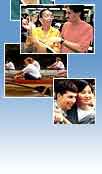
|
||||||||||||||||
|
Features
Innovation at Rochester:
|
||||||||||||||||
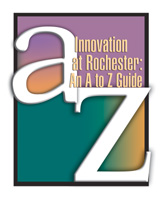 |
Who discovered vitamin K? What is a wind ensemble? Why is the work of William Blake so well suited to an online world? And, indeed, how has Rochester played a part in these and other influential innovations? Drawing inspiration from the theme for the College’s upcoming Meliora Weekend, October 10–12, Rochester Review set out to catalog just a few of the innovative ideas that Rochester faculty, staff, alumni, and students have produced to change—in both big ways and small—the world in which we live. By Scott Hauser
A – F |
A
Adaptive Optics
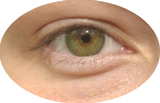 |
Rochester researchers picture a day when even those who don’t need glasses could have better vision.
Based on technology originally used by astronomers, vision scientist David Williams has developed an ophthalmic instrument equipped with “adaptive optics” that uses a laser and a special mirror to provide a previously unattainably detailed look at the retina of the living human eye. The accuracy with which the device can measure and correct optical defects allows scientists to better track disease as well as improve vision through laser surgery and customized contact lenses.
B
Blake Archive
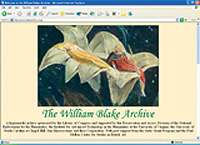 |
He could be considered the first multimedia artist, so perhaps it’s fitting that William Blake is the subject of one of the first—and one of the most complete—online, multimedia resources designed for scholars.
The William Blake Archive, coedited by English professor Morris Eaves, was founded in 1996 as a way to bring together in one site the many facets of the work of the 18th-century British poet, printmaker, painter, and mystic. Because of the difficulty of reproducing Blake’s original artwork, most students and scholars know either his poetry or his painting, but not both.
Taking advantage of the Internet’s signature hypertext technology, the archive showcases the interconnectedness of Blake’s work.
To better maintain a repository of more than 4,000 images, the site’s editors also have pioneered new systems for encoding electronic images so that they are more easily searchable.
C
Curricula
Rochester has introduced new approaches to college curricula that have earned high marks from educators across the country:
 |
The Rochester Curriculum: Launched in 1996, the College’s undergraduate curriculum is guided by the principle that scholars learn best when they are studying what they love. Eschewing a long list of required courses, the approach allows students to become deeply involved in their major courses of study early in their tenure at the College. In addition, students choose three related courses—known as “clusters”—outside their major, selecting two clusters from the broad discipline groupings of arts and humanities, social sciences, and the natural sciences and engineering.
Double Helix Curriculum: Taking its name from the intertwined strands of DNA, the School of Medicine and Dentistry’s curriculum integrates clinical and classroom experiences into the education of physicians throughout the four years of medical school.
Eastman Initiatives: Designed to prepare music professionals for the changing culture and marketplace for classical music, the Eastman School has created a series of educational innovations that focus on pragmatic subjects like entrepreneurship, funding for the arts, and sound engineering as well as outreach and audience development programs.
D
DNA
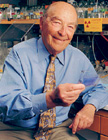 |
In a milestone breakthrough that made possible the age of genetic engineering, Arthur Kornberg ’41M (MD) was the first to synthesize DNA in a test tube.
The work, which earned Kornberg a share of the 1959 Nobel Prize in medicine, helped ignite the biotechnology revolution that has led to new drugs in the treatment of cancer, AIDS, diabetes, and other diseases.
In 1999, the centerpiece building in the Medical Center’s plan to transform the University into a medical research powerhouse was named after the onetime intern at Strong Memorial Hospital. The Kornberg building houses six research centers focusing on aging and developmental biology, cancer biology, cardiovascular research, human genetics and molecular pediatric disease, oral biology, and vaccine biology and immunology.
E
Extra Year: ‘Take Five’
 |
Susannah Klank (right) could have graduated in 2002, but the biology major chose to stay an extra year because she wanted to study something new. Intrigued by the question of how women are represented in popular culture, Klank asked to stay for a fifth year to focus on the subject.
Thanks to the College’s Take Five program, she could— without the cost of tuition.
Described by The New York Times shortly after its launch as “one of the more innovative liberal-arts programs in the country,” Take Five is designed to give students the opportunity to augment their education by taking a year’s worth of classes outside their major.
Klank, who graduated last spring, says the additional year of women’s studies, art history, and film studies classes has enriched her sense of herself as a scholar.
“It taught me how to think in a new area that I never got a chance to explore,” she says.
The extra year also gave her time to be a resident assistant, strengthening her ties to Rochester and a new class of students.
“I feel like I got a chance to give back,” Klank says. “I feel a lot more connected to campus.”
F
Center for Future Health
Is there a doctor in the house?
At the University’s Center for Future Health, the melodramatic cliché takes on new meaning for an innovative intersection of health care, smart technology, and personal health management.
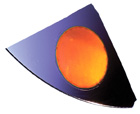 |
Researchers at the center have developed a prototype for a smart bandage that can detect infection and have designed futuristic technologies intended to allow individuals, in the privacy of their own homes, to maintain their health, spot the onset of health problems, and manage disease.
Founded in 1999, the multidisciplinary research program includes physicians, health practitioners, chemists, computer scientists, engineers, and behavioral scientists.
| SEARCH: Directory | Index | Contact | Calendar | News | Giving | |||